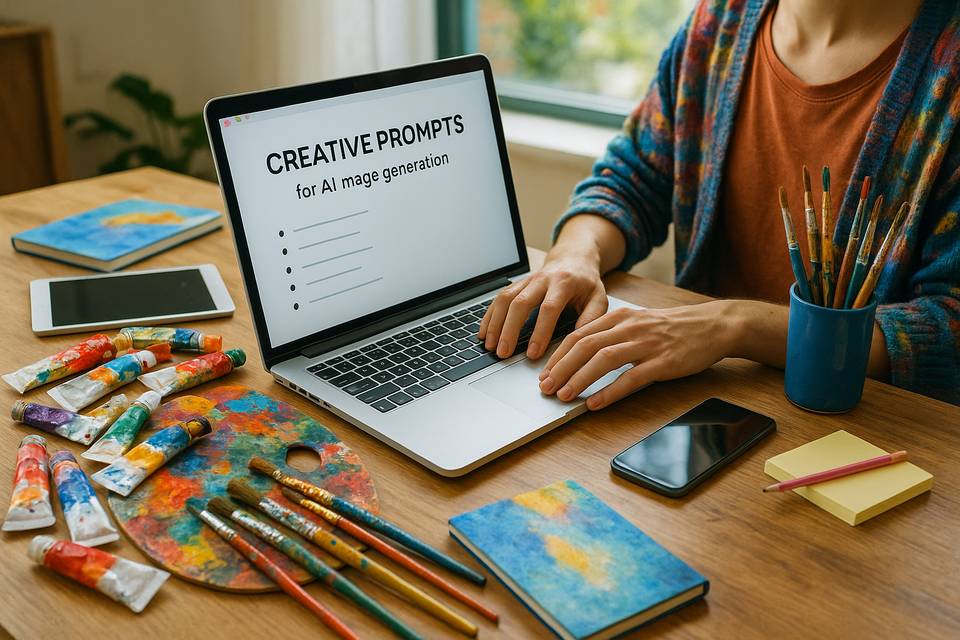Introduction
In the world of digital creativity, AI image generation is revolutionizing how we think about creating visuals. Whether you're an artist, designer, marketer, or just someone looking to add flair to your social media, crafting effective text prompts can make all the difference. This guide will help you understand the nuances of writing prompts that yield stunning AI-generated images.
What is AI Image Generation?
AI image generation refers to the use of artificial intelligence algorithms to create images based on textual descriptions or prompts. This process can transform a simple idea into vibrant visuals, opening up a world of possibilities for everyone involved in creative projects.
The Importance of Text Prompts
Effective text prompts serve as the foundation for successful AI image generation. A well-crafted prompt can:
- Direct the AI: The clearer your prompt, the better the AI can interpret and create the desired output.
- Enhance Creativity: By playing with language, you can trigger unexpected and imaginative results.
- Save Time: Precise prompts reduce the need for iterations and revisions, allowing you to quickly achieve the desired outcome.
How to Write Effective Prompts
1. Be Specific
When you write a prompt, include specific details to guide the AI. Instead of saying "a dog in a park," try "a golden retriever playing fetch under a sunny sky in a lush green park."
Tips for Specificity:
- Use Adjectives: Describe colors, sizes, emotions, and settings.
- Incorporate Action Words: This helps the AI visualize movement and context.
2. Use Descriptive Language
The richness of your description can significantly impact the quality of the generated image. Utilize vivid vocabulary and sensory details.
Example:
- Poor Prompt: "A car."
- Improved Prompt: "A sleek red sports car speeding down a winding coastal road, with the ocean waves crashing against the rocks."
3. Include Artistic Style or Medium
If you have a particular aesthetic in mind, specify it in your prompt. For example, you could mention styles like watercolor, realism, or abstract.
Examples:
- "A city skyline at sunset, painted in impressionist style."
- "A fantasy castle in a lush forest, reminiscent of Studio Ghibli artistry."
4. Experiment with Different Perspectives
Consider the vantage point or angle from which the subject should be viewed. This can give a unique touch to the generated image.
Examples:
- "A bird’s eye view of a bustling marketplace."
- "A close-up of a flower glistening with dew in the early morning light."
5. Utilize Action Contexts
Adding context about what is happening in the scene can lead to more dynamic and engaging images.
Example:
- "A couple dancing under the stars at a summer festival, with colorful lights twinkling in the background."
Common Mistakes to Avoid
While writing prompts, it's essential to be aware of potential pitfalls that could hinder image generation:
- Vagueness: Avoid general terms that lack detail. Instead of "a cat," specify "a playful tabby kitten sitting on a sunny windowsill."
- Overloading with Details: Too much information can confuse the AI. Strike a balance between specificity and clarity.
- Ignoring the AI's Limitations: Be aware of what the AI can realistically generate. Prompts with impossible scenarios might not yield accurate results.
Examples of Effective Prompts
Here are a few examples of great prompts you can use for inspiration:
- "An astronaut relaxing on Mars, gazing at Earth from a distance, painted in a surreal style."
- "A cozy coffee shop interior, with warm lighting and patrons enjoying their drinks on a rainy day."
- "A futuristic city with flying cars and tall, glowing skyscrapers under a starry night sky."
Testing and Iterating on Your Prompts
Once you've drafted your prompts, it's crucial to test them out:
- Generate Images: Use an AI image generator like RestyleAI to create visuals based on your prompts.
- Analyze the Results: Assess whether the images align with your vision. Take notes on what aspects worked well and what didn’t.
- Refine Your Prompts: Based on the outcomes, go back to your prompts and make adjustments. This iterative process will improve your prompt-writing skills.
Conclusion
Crafting effective text prompts for AI image generation is both an art and a science. Combining specificity, creativity, and an understanding of the AI's capabilities can yield stunning results that enhance any creative project. Don't be afraid to experiment and iterate, as this will only sharpen your skills.
Ready to bring your ideas to life? Try RestyleAI today to generate stunning visuals from your imaginative prompts!
